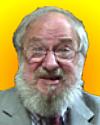
Born 1 Mar 1928; died 31 Jul 2016 at age 88. quotes
American computer scientist who invented the Logo computer programming language, an educational computer programming language for children. He studied under Piaget, absorbing his educational theories. He has studied ways to use mathematics to understand better how children learn and think, and about the ways in which computers can aid in a child's learning. With Marvin Minsky, he co-founded the Artificial Intelligence Lab at MIT. In the mid-80s he worked in Costa Rica to develop a nationwide program of intensive computer use throughout the public education system. Costa Rica, which now has the highest literacy rate in the Americas, continues to serve as a model for large-scale deployment of computer technology in education.
American computer scientist who invented the Logo computer programming language, an educational computer programming language for children. He studied under Piaget, absorbing his educational theories. He has studied ways to use mathematics to understand better how children learn and think, and about the ways in which computers can aid in a child's learning. With Marvin Minsky, he co-founded the Artificial Intelligence Lab at MIT. In the mid-80s he worked in Costa Rica to develop a nationwide program of intensive computer use throughout the public education system. Costa Rica, which now has the highest literacy rate in the Americas, continues to serve as a model for large-scale deployment of computer technology in education.
Mindstorms: Children, Computers, And Powerful Ideas, by Seymour A. Papert. - book suggestion.
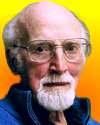
Born 1 Mar 1915; died 25 Nov 2013 at age 98.
American artist, illustrator and naturalist who joined the American Natural History Museum at age 19, as an apprentice to assist in making dioramas, the backgrounds and senery to displays of stuffed animals. He learned his skills on the job. His art was to give depth, where there was none, and reality to re-creations of natural habitat that melded seamlessly into the physical display of taxidermy. The heydey, when most of his work was done, was in the period of the 1940s to 1960s. He would take field trips to view what he was to paint, to best get the first-hand feel of the interplay of light and colours of the landscape and fauna. In his New York Times obituary, he was credited with an uncanny ability to summon the illusion of air currents, odours and bugs to fill the space between in the several feet between the back of the case and the observer's glass.«
American artist, illustrator and naturalist who joined the American Natural History Museum at age 19, as an apprentice to assist in making dioramas, the backgrounds and senery to displays of stuffed animals. He learned his skills on the job. His art was to give depth, where there was none, and reality to re-creations of natural habitat that melded seamlessly into the physical display of taxidermy. The heydey, when most of his work was done, was in the period of the 1940s to 1960s. He would take field trips to view what he was to paint, to best get the first-hand feel of the interplay of light and colours of the landscape and fauna. In his New York Times obituary, he was credited with an uncanny ability to summon the illusion of air currents, odours and bugs to fill the space between in the several feet between the back of the case and the observer's glass.«
Windows on Nature: The Great Habitat Dioramas of the American Museum of Natural History, by Stephen Christopher Quinn. - book suggestion.
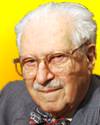
Born 1 Mar 1914; died 20 Jun 2003 at age 89. quotes
American science historian who was the first American to receive a Ph.D. in history of science. He published many books on the history of science. His notable Principia: Mathematical Principles of Natural Philosophy (1999), the first English translation of Isaac Newton's Principia since 1729, took 15 years to complete, and comprised 974 pages. He also wrote about Benjamin Franklin and the computer pioneer, Howard Aiken.«
American science historian who was the first American to receive a Ph.D. in history of science. He published many books on the history of science. His notable Principia: Mathematical Principles of Natural Philosophy (1999), the first English translation of Isaac Newton's Principia since 1729, took 15 years to complete, and comprised 974 pages. He also wrote about Benjamin Franklin and the computer pioneer, Howard Aiken.«
The Triumph of Numbers: How Counting Shaped Modern Life, by Bernard Cohen. - book suggestion.
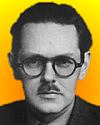
Born 1 Mar 1910; died 28 Jul 2002 at age 92. quotes
Archer John Porter Martin was an English biochemist who shared (with R.L.M. Synge) the Nobel Prize for Chemistry in 1952 for development of paper partition chromatography using two different liquids moving at right angles. This quick and economical analytical technique separates the different components of a mixture, permitting their identification and analysis. As a new tool, it provided extensive advances in chemical, medical, and biological research. In 1941 Martin and Synge had realized that the partition of a solute between a gas and a liquid was possible, but it was in the early 1950s that Martin developed the technique of gas-liquid chromatography with A. T. James.
Archer John Porter Martin was an English biochemist who shared (with R.L.M. Synge) the Nobel Prize for Chemistry in 1952 for development of paper partition chromatography using two different liquids moving at right angles. This quick and economical analytical technique separates the different components of a mixture, permitting their identification and analysis. As a new tool, it provided extensive advances in chemical, medical, and biological research. In 1941 Martin and Synge had realized that the partition of a solute between a gas and a liquid was possible, but it was in the early 1950s that Martin developed the technique of gas-liquid chromatography with A. T. James.
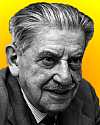
Born 1 Mar 1880; died 25 Jan 1963 at age 82.
Russian-Born British electrical engineer and principal inventor of the first high-definition television system, as used by the British Broadcasting Corporation (BBC) for the world's first public high-definition telecast (from London, 1936). He had installed the first radio stations in Russia before moving to England in 1914. He was head of a research group for Electrical and Musical Industries (EMI) that developed (1931-35) an advanced kind of camera tube (the Emitron) and a relatively efficient hard-vacuum cathode-ray tube for the television receiver. Until 1964 the BBC used his technical standard proposal - 405 scanning lines and 25 pictures a second. He was director of EMI from 1955. His youngest son, David Shoenberg, became a noted physicist.
Russian-Born British electrical engineer and principal inventor of the first high-definition television system, as used by the British Broadcasting Corporation (BBC) for the world's first public high-definition telecast (from London, 1936). He had installed the first radio stations in Russia before moving to England in 1914. He was head of a research group for Electrical and Musical Industries (EMI) that developed (1931-35) an advanced kind of camera tube (the Emitron) and a relatively efficient hard-vacuum cathode-ray tube for the television receiver. Until 1964 the BBC used his technical standard proposal - 405 scanning lines and 25 pictures a second. He was director of EMI from 1955. His youngest son, David Shoenberg, became a noted physicist.
Born 1 Mar 1839; died 12 Aug 1914 at age 75.
Albert Smith Bickmore was an American naturalist, traveller and museum curator who acquired his love of natural history as a result of growing up in a coastal town. He studied natural history under Professor Agassiz, and shortly also began to care for the department of Mullusca at the Museum of Comparative Zoology at Harvard University. There he conceived the idea of the American Museum of Natural History. By 1865, he set off on a three-year expedition to the East Indies, China, Japan, Russia and Europe gathering specimens to form the basis of the future museum's collection. Upon his return, he devoted himself to indeed establishing the institution, and was able to arrange for its funding. He wrote of his travels in Travels in the East Indian Archipelago (1869). In 1870, he was appointed Professor Natural History at Madison University, Hamilton, New York. The cornerstone of the new building was laid on 2 Jun 1874, by President Grant.«
Albert Smith Bickmore was an American naturalist, traveller and museum curator who acquired his love of natural history as a result of growing up in a coastal town. He studied natural history under Professor Agassiz, and shortly also began to care for the department of Mullusca at the Museum of Comparative Zoology at Harvard University. There he conceived the idea of the American Museum of Natural History. By 1865, he set off on a three-year expedition to the East Indies, China, Japan, Russia and Europe gathering specimens to form the basis of the future museum's collection. Upon his return, he devoted himself to indeed establishing the institution, and was able to arrange for its funding. He wrote of his travels in Travels in the East Indian Archipelago (1869). In 1870, he was appointed Professor Natural History at Madison University, Hamilton, New York. The cornerstone of the new building was laid on 2 Jun 1874, by President Grant.«
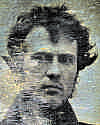
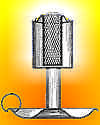
lard lamp
American photographer and manufacturer who made the first U.S. self-portrait photograph (a daguerrotype, Nov 1839), opened the first U.S. portrait photography studio (Feb 1840), and published the first photographic advertisement. He was helped by his prior study of chemistry. That enterprise he operated only as a side-interest until 1843, for his life's career was with the business started by his father, the leading maufacturer of oil lamps and gas fixtures. After 1831, when he became a partner, the business was known as Cornelius and Son. He is creditted with designing mechanical devices to facilitate the various factory processes in working metal. Before the availability of gas, the “solar lamp” he invented and patented (U.S. No. 3030, 1843) enabled burning simple lard (from fatted pigs: “prairie whales”) instead of more expensive whale oil.«[Image: detail from Cornelius self-portrait daguerrotype, believed to be the earliest extant American portrait photo, and is now in the Library of Congress.]
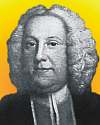

English mathematician who introduced the division sign (obelus,÷) into England. The obelus was first used by Johann Rahn (1622-1676) in 1659 in Teutsche Algebra. Rahn's book was interpreted into English and published, with additions made by John Pell. According to some sources, John Pell was a key influence on Rahn and he may be responsible for the development of the symbol. The word obelus comes from a Greek word meaning a "roasting spit." The symbol wasn't new. It had been used to mark passages in writings that were considered dubious, corrupt or spurious.Image: the division symbol as first used by Rahn in Teutsche Algebraas reproduced by Florian Cajori in A History of Mathematical Notations, (1928-29) vol. 2, page 211.
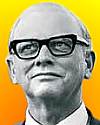
Died 1 Mar 2001 at age 84 (born 21 Jun 1916).
English inventor and industrialist who invented and manufactured the JCB construction machine with a hydraulically operated shovel on the front and an excavator arm on the back. From the business which bore his initials that he started in a garage in 1945, he became one of Britain's most successful industrialists. He pioneered the backhoe loader concept in Europe, which he first introduced in 1954. He is also credited with the widespread application of hydraulic technology in construction and agricultural equipment. The company he founded now has a global market in heavy plant and agricultural machinery. In 1968, he created a nature reserve in the grounds of the factory which now successfully hosts much wildlife.«
English inventor and industrialist who invented and manufactured the JCB construction machine with a hydraulically operated shovel on the front and an excavator arm on the back. From the business which bore his initials that he started in a garage in 1945, he became one of Britain's most successful industrialists. He pioneered the backhoe loader concept in Europe, which he first introduced in 1954. He is also credited with the widespread application of hydraulic technology in construction and agricultural equipment. The company he founded now has a global market in heavy plant and agricultural machinery. In 1968, he created a nature reserve in the grounds of the factory which now successfully hosts much wildlife.«

Died 1 Mar 1998 at age 81 (born 8 Dec 1916).
Brazilian anthropologist and activist whose life was dedicated to the search for and protection of the country's indigenous people as their lands were taken over and developed; he and his brother Orlando aided in the creation of the Xingu National Park reservation in 1961 and the National Indian Foundation six years later. He helped to build more than 30 airfields in the middle of the jungle and opened more than 1,000 miles of trails under the Amazon canopy. Together with his brothers, Cláudio contacted some of the most feared tribes like the Kalapalos, Kayabi, Kamaiurás, Meinacos, and Txucarramães. In 1973 they made contact for the first time with the Kreen-Akarore Indians (or Panarás, the giant Indians) in the north of the state of Mato Grosso.
Brazilian anthropologist and activist whose life was dedicated to the search for and protection of the country's indigenous people as their lands were taken over and developed; he and his brother Orlando aided in the creation of the Xingu National Park reservation in 1961 and the National Indian Foundation six years later. He helped to build more than 30 airfields in the middle of the jungle and opened more than 1,000 miles of trails under the Amazon canopy. Together with his brothers, Cláudio contacted some of the most feared tribes like the Kalapalos, Kayabi, Kamaiurás, Meinacos, and Txucarramães. In 1973 they made contact for the first time with the Kreen-Akarore Indians (or Panarás, the giant Indians) in the north of the state of Mato Grosso.
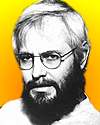
Died 1 Mar 1995 at age 48 (born 17 Apr 1946).
Georges Jean Franz Köhler was a German immunologist who shared (with César Milstein and Niels K. Jerne) the 1984 Nobel Prize for Physiology or Medicine for his work in developing the technique for producing monoclonal antibodies - pure, uniform, and highly sensitive protein molecules used in diagnosing and combating a number of diseases. These antibodies, and the subsequent developments based their work, revolutionized the diagnosis and treatment of many immunologic diseases, including some forms of cancer and AIDS. In 1975, he and Milstein published in Nature the results of their work leading to the production of monoclonal antibodies “Continuous cultures of fused cells secreting antibody of predefined specificity.” Milstein's and Köhler's method of producing monoclonal antibodies involves fusing an antibody-producing cell - which can recognize an invading organism - with a tumor cell, which lives and reproduces indefinitely. Their discoveries are being used in research on mild illnesses and diseases such as cancer and AIDS.
Georges Jean Franz Köhler was a German immunologist who shared (with César Milstein and Niels K. Jerne) the 1984 Nobel Prize for Physiology or Medicine for his work in developing the technique for producing monoclonal antibodies - pure, uniform, and highly sensitive protein molecules used in diagnosing and combating a number of diseases. These antibodies, and the subsequent developments based their work, revolutionized the diagnosis and treatment of many immunologic diseases, including some forms of cancer and AIDS. In 1975, he and Milstein published in Nature the results of their work leading to the production of monoclonal antibodies “Continuous cultures of fused cells secreting antibody of predefined specificity.” Milstein's and Köhler's method of producing monoclonal antibodies involves fusing an antibody-producing cell - which can recognize an invading organism - with a tumor cell, which lives and reproduces indefinitely. Their discoveries are being used in research on mild illnesses and diseases such as cancer and AIDS.
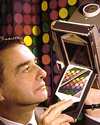
1947
Died 1 Mar 1991 at age 81 (born 7 May 1909). quotes
American inventor and physicist who founded the Polaroid Company. His one-step process for developing and printing photographs was the greatest innovation in photography since the introduction of roll film. He first demonstrated the Polaroid Land Camera in 1947, which gave fully developed prints in 60 seconds. Land also applied the name Polaroid to the light-polarizing filter he had previously invented by embedding suitable crystals in a plastic sheet, which was widely known for its use in the lenses of sunglasses. His other projects included instant X-rays, 3D movie projector among the over 500 patents he held.
American inventor and physicist who founded the Polaroid Company. His one-step process for developing and printing photographs was the greatest innovation in photography since the introduction of roll film. He first demonstrated the Polaroid Land Camera in 1947, which gave fully developed prints in 60 seconds. Land also applied the name Polaroid to the light-polarizing filter he had previously invented by embedding suitable crystals in a plastic sheet, which was widely known for its use in the lenses of sunglasses. His other projects included instant X-rays, 3D movie projector among the over 500 patents he held.
Insisting On The Impossible: The Life Of Edwin Land, by Victor K. McElheny. - book suggestion.
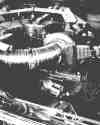
Tokamak T-3
Died 1 Mar 1973 at age 64 (born 25 Feb 1909).
Lev Andreevich Artsimovich was a Soviet physicist who provided the basis of the Tokamak, a device capable of confining ultra-high temperature plasma suitable for research into controlled nuclear fusion. After WW II, he began with the task of isotope separation for nuclear bomb fuel, and from there turned to work on a goal of controlled nuclear fusion.
Lev Andreevich Artsimovich was a Soviet physicist who provided the basis of the Tokamak, a device capable of confining ultra-high temperature plasma suitable for research into controlled nuclear fusion. After WW II, he began with the task of isotope separation for nuclear bomb fuel, and from there turned to work on a goal of controlled nuclear fusion.
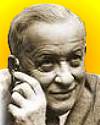
Died 1 Mar 1957 at age 69 (born 2 Mar 1887).
American locksmith and inventor who patented the laminated steel padlock, and founder of Master Lock Company (1921). As a locksmith, Soref had realized that the cheaper padlocks, made with stamped metal sheels, were poor security because they were easily damaged. He patented (1924) his invention of a laminated padlock which, like bank vault doors and battleships, was built in laminations of layer on layer of steel for greater strength. Unable to sell his invention to a padlock manufacturer, he began making them himself. Master Lock opened its first tiny factory in Milwaukee, Wisc. In 1928 Master Lock gained national recognition for shipping 147,600 padlocks to federal prohibition agents in New York for locking up the speakeasies they raided.« more
American locksmith and inventor who patented the laminated steel padlock, and founder of Master Lock Company (1921). As a locksmith, Soref had realized that the cheaper padlocks, made with stamped metal sheels, were poor security because they were easily damaged. He patented (1924) his invention of a laminated padlock which, like bank vault doors and battleships, was built in laminations of layer on layer of steel for greater strength. Unable to sell his invention to a padlock manufacturer, he began making them himself. Master Lock opened its first tiny factory in Milwaukee, Wisc. In 1928 Master Lock gained national recognition for shipping 147,600 padlocks to federal prohibition agents in New York for locking up the speakeasies they raided.« more
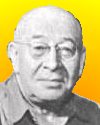
Died 1 Mar 1950 at age 70 (born 3 Jul 1879). quotes
Polish-born American scientist and philosopher. Korzybski was the originator of general semantics, a system of linguistic philosophy that attempts to increase humanity's capacity to transmit ideas from generation to generation (what Korzybski called man's "time-binding capacity") through the study and refinement of ways of using and reacting to language.
Polish-born American scientist and philosopher. Korzybski was the originator of general semantics, a system of linguistic philosophy that attempts to increase humanity's capacity to transmit ideas from generation to generation (what Korzybski called man's "time-binding capacity") through the study and refinement of ways of using and reacting to language.
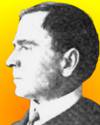
Died 1 Mar 1948 at age 80 (born 23 Jul 1867).
Edward Griffith Brewer was an English lawyer, balloonist and aviator who was the first Englishman to fly in an airplane (though as a passenger). Brewer was a patent attorney, who had been making aerial ascents since 1891 as a ballonist. In 1908, he met Wilbur Wright who was giving flying exhibitions in France. Wilbur took Brewer on a short airplane ride, which prompted Brewer to ask about taking flying instruction some time later. They established a lifetime friendship, and Brewer made many visits to Wright's home in Dayton. Meanwhile, Langley—the director of the Smithsonian Institution—was claiming to have had his own Great Aerodrome capable of flight before the Wrights. Brewer staunchly supported the Wrights by writing to the New York Times, and lecturing to the Royal Society in England. He suggested the 1903 Wright Flyer be exhibited at the Science Museum. in London.« more
Edward Griffith Brewer was an English lawyer, balloonist and aviator who was the first Englishman to fly in an airplane (though as a passenger). Brewer was a patent attorney, who had been making aerial ascents since 1891 as a ballonist. In 1908, he met Wilbur Wright who was giving flying exhibitions in France. Wilbur took Brewer on a short airplane ride, which prompted Brewer to ask about taking flying instruction some time later. They established a lifetime friendship, and Brewer made many visits to Wright's home in Dayton. Meanwhile, Langley—the director of the Smithsonian Institution—was claiming to have had his own Great Aerodrome capable of flight before the Wrights. Brewer staunchly supported the Wrights by writing to the New York Times, and lecturing to the Royal Society in England. He suggested the 1903 Wright Flyer be exhibited at the Science Museum. in London.« more
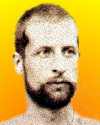
Died 1 Mar 1943 at age 79 (born 23 Sep 1863).
Swiss-French bacteriologist who co-discovered the plague bacillus, Pasteurella pestis (also called Yersinia pestis and Bacillus pestis). With Pierre Roux he discovered the diphtheria toxin (1889). Yersin discovered the plague bacillus simultaneously with Shibasaburo Kitasato (1894) in Hong Kong, where he had been sent by the French government. The Japanese bacteriologist Kitasato had arrived days earlier and had secured priority to the limited facilities. Nevertheless, Yersin gained a sample of pus excised from a plague victim, and was able almost immediately isolate the plague bacillus. Yersin then set out to attenuate the bacillus and develop an anti-plague serum. He successfully treated his first plague patient, a Chinese student, in 1896.
Swiss-French bacteriologist who co-discovered the plague bacillus, Pasteurella pestis (also called Yersinia pestis and Bacillus pestis). With Pierre Roux he discovered the diphtheria toxin (1889). Yersin discovered the plague bacillus simultaneously with Shibasaburo Kitasato (1894) in Hong Kong, where he had been sent by the French government. The Japanese bacteriologist Kitasato had arrived days earlier and had secured priority to the limited facilities. Nevertheless, Yersin gained a sample of pus excised from a plague victim, and was able almost immediately isolate the plague bacillus. Yersin then set out to attenuate the bacillus and develop an anti-plague serum. He successfully treated his first plague patient, a Chinese student, in 1896.
Plague: A Story of Rivalry, Science, and the Scourge That Won't Go Away, by Edward Marriott. - book suggestion.
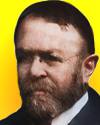
Died 1 Mar 1914 at age 66 (born 9 Jul 1847).
Edwin James Houston was an American electrical engineer who, together with Elihu Thomson (another Philadelphia high school teacher) experimented with electricity. Houston invented, patented (1881), and manufactured arc street-lighting. He presented the first paper, Notes on Phenomena in Incandescent Lamps, to The American Institute of Electrical Engineers when it began in 1884 (AIEE - the predecessor society of the present IEEE, The Institute of Electrical and Electronics Engineers, Inc.). The merger of Thomson-Houston and Edison General Electric companies (1892) formed General Electric. In 1894 he joined with Arthur Kennelly (who resigned from Edison's laboratory) to form a consulting company.
Edwin James Houston was an American electrical engineer who, together with Elihu Thomson (another Philadelphia high school teacher) experimented with electricity. Houston invented, patented (1881), and manufactured arc street-lighting. He presented the first paper, Notes on Phenomena in Incandescent Lamps, to The American Institute of Electrical Engineers when it began in 1884 (AIEE - the predecessor society of the present IEEE, The Institute of Electrical and Electronics Engineers, Inc.). The merger of Thomson-Houston and Edison General Electric companies (1892) formed General Electric. In 1894 he joined with Arthur Kennelly (who resigned from Edison's laboratory) to form a consulting company.
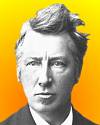
Died 1 Mar 1911 at age 58 (born 30 Aug 1852). quotes
Dutch physical chemist who was the first winner of the Nobel Prize for Chemistry (1901) “in recognition of the extraordinary services he has rendered by the discovery of the laws of chemical dynamics and osmotic pressure in solutions.” In stereochemistry, in 1874, he identified the four chemical bonds of carbon as having a tetrahedral arrangement, which explained how certain moleculars can be arranged differently with the same atoms to give left- and right-handed isomers. (Achille Le Bel arrived independently at the same conclusion at about the same time.) With regard to the osmotic pressure of liquids, he derived laws (1886) for dilute solutions similar to the gas laws for gases by Robert Boyle and Joseph Gay-Lussac. These relationships enabled the experimental determination of the molecular weight of a substance in solution.«
Dutch physical chemist who was the first winner of the Nobel Prize for Chemistry (1901) “in recognition of the extraordinary services he has rendered by the discovery of the laws of chemical dynamics and osmotic pressure in solutions.” In stereochemistry, in 1874, he identified the four chemical bonds of carbon as having a tetrahedral arrangement, which explained how certain moleculars can be arranged differently with the same atoms to give left- and right-handed isomers. (Achille Le Bel arrived independently at the same conclusion at about the same time.) With regard to the osmotic pressure of liquids, he derived laws (1886) for dilute solutions similar to the gas laws for gases by Robert Boyle and Joseph Gay-Lussac. These relationships enabled the experimental determination of the molecular weight of a substance in solution.«
Imagination in Science, by J. H. van't Hoff. - book suggestion.
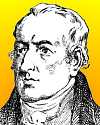
Died 1 Mar 1862 at age 85 (born 13 Oct 1776). quotes
English mathematician and engineer who invented two varieties of achromatic (non-colour-distorting) telescope lenses. In 1819, Barlow began work on the problem of deviation in ship compasses caused by the presence of iron in the hull. For his method of correcting the deviation by juxtaposing the compass with a suitably shaped piece of iron, he was awarded the Copley Medal. In 1822, he built a device which is to be considered one of the first models of an electric motor supplied by continuous current. He also worked on the design of bridges, in particular working (1819-26) with Thomas Telford on the design of the bridge over the Menai Strait, the first major modern suspension bridge. Barlow was active during the period of railway building in Britain.
English mathematician and engineer who invented two varieties of achromatic (non-colour-distorting) telescope lenses. In 1819, Barlow began work on the problem of deviation in ship compasses caused by the presence of iron in the hull. For his method of correcting the deviation by juxtaposing the compass with a suitably shaped piece of iron, he was awarded the Copley Medal. In 1822, he built a device which is to be considered one of the first models of an electric motor supplied by continuous current. He also worked on the design of bridges, in particular working (1819-26) with Thomas Telford on the design of the bridge over the Menai Strait, the first major modern suspension bridge. Barlow was active during the period of railway building in Britain.
Died 1 Mar 1854 at age 56 (born 17 Feb 1798).
German philosopher and psychologist who argued that inductive psychology was the foundation for the study of all philosophical disciplines. He rejected the existing idealism for a form of associationism influenced by both Immanuel Kant and Locke. Beneke agreed with Herbart's general idea that mathematics should be introduced into psychology, but he felt that Herbart's attempt to quantify psychological phenomena was insufficiently empirical. Beneke suggested that more precise observations were needed, through psychological experiments. Although he never carried out such experiments himself, Beneke demanded that psychologists should develop their theories, and test them, under controlled conditions and with the systematic variation of variables.
German philosopher and psychologist who argued that inductive psychology was the foundation for the study of all philosophical disciplines. He rejected the existing idealism for a form of associationism influenced by both Immanuel Kant and Locke. Beneke agreed with Herbart's general idea that mathematics should be introduced into psychology, but he felt that Herbart's attempt to quantify psychological phenomena was insufficiently empirical. Beneke suggested that more precise observations were needed, through psychological experiments. Although he never carried out such experiments himself, Beneke demanded that psychologists should develop their theories, and test them, under controlled conditions and with the systematic variation of variables.
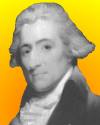
Died 1 Mar 1829 at age 80 (born 4 Feb 1749).
English watchmaker, the first to simplify and economize in producing chronometers so as to make them available to the general public. In 1782, he devised the spring detent chronometer escapement. He did much to develop the chronometer, and was awarded £3,000 by Board of Longitude. His chronometers were described in a publication by the Commissioners of Longitude in 1806. Forty years after his death, the novelist Jules Verne described Phileas Fogg as, "He gave the idea of being perfectly well-balanced, as exactly regulated as a Leroy or Earnshaw chronometer."
English watchmaker, the first to simplify and economize in producing chronometers so as to make them available to the general public. In 1782, he devised the spring detent chronometer escapement. He did much to develop the chronometer, and was awarded £3,000 by Board of Longitude. His chronometers were described in a publication by the Commissioners of Longitude in 1806. Forty years after his death, the novelist Jules Verne described Phileas Fogg as, "He gave the idea of being perfectly well-balanced, as exactly regulated as a Leroy or Earnshaw chronometer."
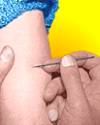
Died 1 Mar 1766 at age 89 (born 9 Mar 1676). quotes
American physician who introduced smallpox inoculation into the American colonies. Small-pox had broken out again in Boston in 1721. Rev. Cotton Mather had learned of a technique being practiced abroad that was reported to give protection. When a small wound was infected with pus taken from a smallpox sore, a person would thereupon develop a trivial case of the disease, but would likely suffer no further more serious infection later. After Mather was rebuffed by other medical practitioners in Boston, he approached Boylston with the idea to experiment with the technique. Boyston thought a trial to be so worthwhile that he inoculated his own son and two others on 26 Jun 1721. Their resulting illness was mild; they recovered by 4 Jul 1721. more
American physician who introduced smallpox inoculation into the American colonies. Small-pox had broken out again in Boston in 1721. Rev. Cotton Mather had learned of a technique being practiced abroad that was reported to give protection. When a small wound was infected with pus taken from a smallpox sore, a person would thereupon develop a trivial case of the disease, but would likely suffer no further more serious infection later. After Mather was rebuffed by other medical practitioners in Boston, he approached Boylston with the idea to experiment with the technique. Boyston thought a trial to be so worthwhile that he inoculated his own son and two others on 26 Jun 1721. Their resulting illness was mild; they recovered by 4 Jul 1721. more
The Speckled Monster: A Historical Tale of Battling the Smallpox Epidemic, by Jennifer Lee Carrell. - book suggestion.
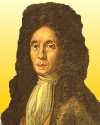
Died 1 Mar 1697 at age 71 (born 18 Feb 1626).
Italian physician and poet who demonstrated that the presence of maggots in putrefying meat does not result from spontaneous generation but from eggs laid on the meat by flies. Redi's interest was aroused by a book by William Harvey who proposed that insects, worms and frogs came from seeds or eggs too small to be seen. In 1668, Redi's classic experimental method was one of the first examples of a biological experiment with proper controls. He repeated the same experiments in different ways, modifying only one parameter at a time, and carrying out suitable tests. Redi prepared eight flasks with different kinds of meat; four were left open and four sealed. The meat rotted in all the flasks, but maggots appeared only in the open flasks which flies could freely enter. (To exclude the possibility that maggot's life cycle was affected in sealed jars, he tested further with two other series of jars, allowing air, but no flies, to enter test jars covered with a fine filter.)
Italian physician and poet who demonstrated that the presence of maggots in putrefying meat does not result from spontaneous generation but from eggs laid on the meat by flies. Redi's interest was aroused by a book by William Harvey who proposed that insects, worms and frogs came from seeds or eggs too small to be seen. In 1668, Redi's classic experimental method was one of the first examples of a biological experiment with proper controls. He repeated the same experiments in different ways, modifying only one parameter at a time, and carrying out suitable tests. Redi prepared eight flasks with different kinds of meat; four were left open and four sealed. The meat rotted in all the flasks, but maggots appeared only in the open flasks which flies could freely enter. (To exclude the possibility that maggot's life cycle was affected in sealed jars, he tested further with two other series of jars, allowing air, but no flies, to enter test jars covered with a fine filter.)
Sparks of Life: Darwinism and the Victorian Debates Over Spontaneous Generation, by James E. Strick. - book suggestion.
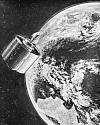
In 1970, direct-dial transatlantic telephone service was opened to the public for calls between the US and Britain by the collaboration of AT&T and the British Post Office (which operated the U.K. telephone system.) The former rate was reduced by one-third. The new service was the first major intercontinental dialing system. Intelsat III satellites handled 1,200 telephone circuits per satellite. Five of these 322-lb satellites had been put in service in synchronous orbits over the Atlantic, Pacific and Indian Oceans in 1968-70, a major expansion from the older 85-pound Early Bird satellite capacity of 240 circuits. Satellites links use microwave beams. Signals received from one ground station, are amplified by the solar-cell powered satellite and are able to be transmitted to a ground station on another continent.«
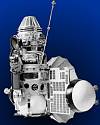
In 1966, the mission of the Soviet Union’s unmanned spacecraft Venera 3 (Venus 3) was a partial success when it reached Venus and automatically released a small landing capsule intended to explore the planet's atmosphere during a parachute descent. However, contact had been lost since 16 Feb 1966. Although no data was returned before the capsule impacted, it became the first man-made object to touch the surface of another planet. The Soviet Union issued a commemorative stamp to mark the achievement. Venera 3 was launched on 16 Nov 1965. The landing capsule (0.9-m diam., about 300-kg) had been designed to collect data on pressure, temperature, and composition of the Venusian atmosphere. Failure is believed due to overheating of internal components and the solar panels.«
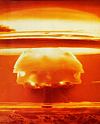
In 1954, at Bikini, in the Pacific Ocean, the blast of the U.S. hydrogen bomb code-named Bravo was the most powerful of all U.S. thermonuclear bomb tests in the area. Equivalent to at least 15 megatons of TNT, it was similar to 1,000 atomic bombs of the kind dropped on Hiroshima, Japan, during WW II.. Bikini is a Pacific archipelago that is part of the Marshall Islands. In this test, one of the atolls was totally vaporized and disappeared in the over 100-mile wide mushroom cloud. Fallout exceeded predictions. Earlier tests began in 1946 after the indiginous people were evacuated to an island believed to be a safe distance away. (They were moved again in 1949.) Radioactivity made the bomb site islands an unsafe wasteland for many decades to follow.«
Dark Sun: The Making of the Hydrogen Bomb, by Richard Rhodes. - book suggestion.
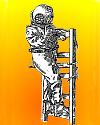
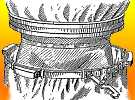
Waist connection and lock
In 1912, Captain Albert Berry performed the first parachute jump from an airplane over Jefferson Barracks, St. Louis, Missouri, U.S.A. Previously, Berry had many times parachuted from a balloon. This time, he left his seat in the two-passenger Benoist pusher bi-plane while it was flying at a speed of about 50 m.p.h., at an altitude of about 1500-ft. The parachute was stowed underneath the aircraft in a specially constructed case. He cut it loose, and descended on a trapeze bar attached below it. Leonardo da Vinci drew a parachute in 1485. With two very large umbrellas, Frenchman Louis-Sébastien Lenormand tested the concept by jumping from a tree in 1783. The first parachute jump from a hydrogen ballon was made by Frenchman André-Jacques Garnerin on 22 Oct 1797.«
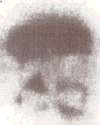
Fogged image
Radioactivity: A History of a Mysterious Science, by Marjorie C. Malley. - book suggestion.
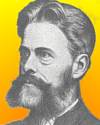
Cope
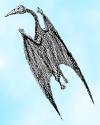
The Gilded Dinosaur: The Fossil War Between E.D. Cope and O.C. Marsh, by Mark Jaffe. - book suggestion.
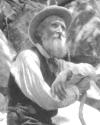
In 1866, John Muir's workplace was destroyed by fire. The factory, near Meaford, Canada, was not only where he worked as a woodworker and inventor of tools, but also where he stored his inventions, and a stock of wood he part-owned, all of which were lost in the fire. At the age of 27, he shortly changed his lifestyle to that of a naturalist and author.
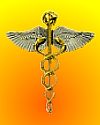
In 1864, Rebecca Lee Crumpler became the first black woman to receive an American medical degree, from the New England Female Medical College in Boston. She began in 1852-1860 as a nurse in Massachusetts. As a medical pioneer who prevailed over the severest of societal restrictions, she spent her lifetime working to improve the health of the black community. In 1883, her desire to educate others in general medical principles resulted in the publication of her A Book of Medicinal Discourses in Two Parts. In the book, based on her personal journals, she focused on instructions for women on how to provide medical care for themselves and their children.
African American Healers, by Clinton Cox. - book suggestion.
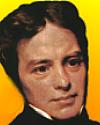
In 1813, Michael Faraday was appointed at the Royal Institution as Chemical Assistant to Humphry Davy, whom he succeeded as Professor of Chemistry in 1820. Since age 14, in 1805, while an apprentice bookbinder, Faraday had educated himself about science. In 1810, he joined the City Philosophical Society to attend lectures and discuss scientific matters. A turning point in his life happened in 1812. A client of the bookbindery gave him four tickets to hear Humphry Davy lecturing at the Royal Institution. Fascinated by the scientific topics, He took notes, which he took with him later to show Davy when he later asked for a position. Davy interviewed him, but there was no opening at the time. When a vacancy ocurred in 1813, Davy recalled him and Faraday was hired.«
The Electric Life Of Michael Faraday, by Alan W. Hirshfeld. - book suggestion.




